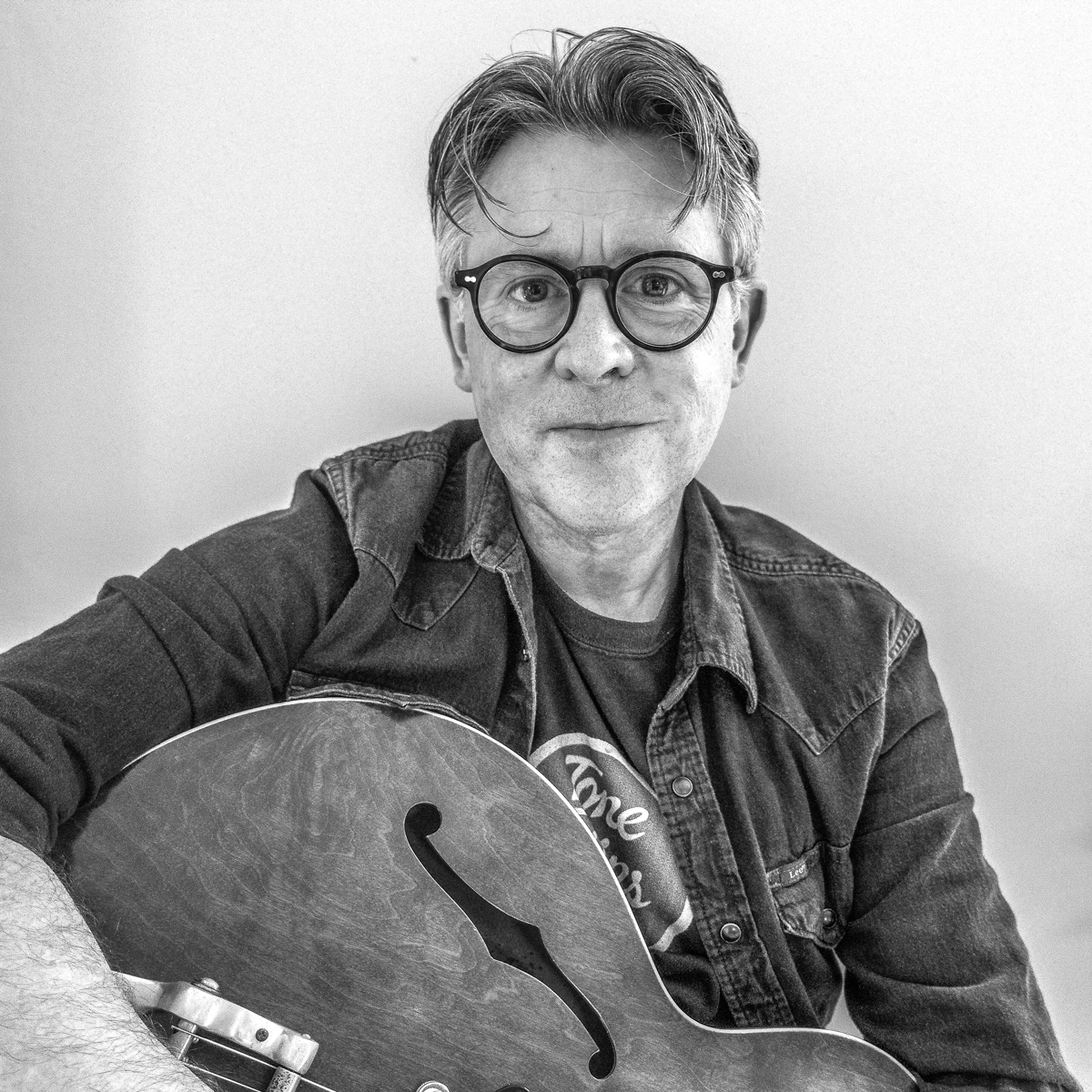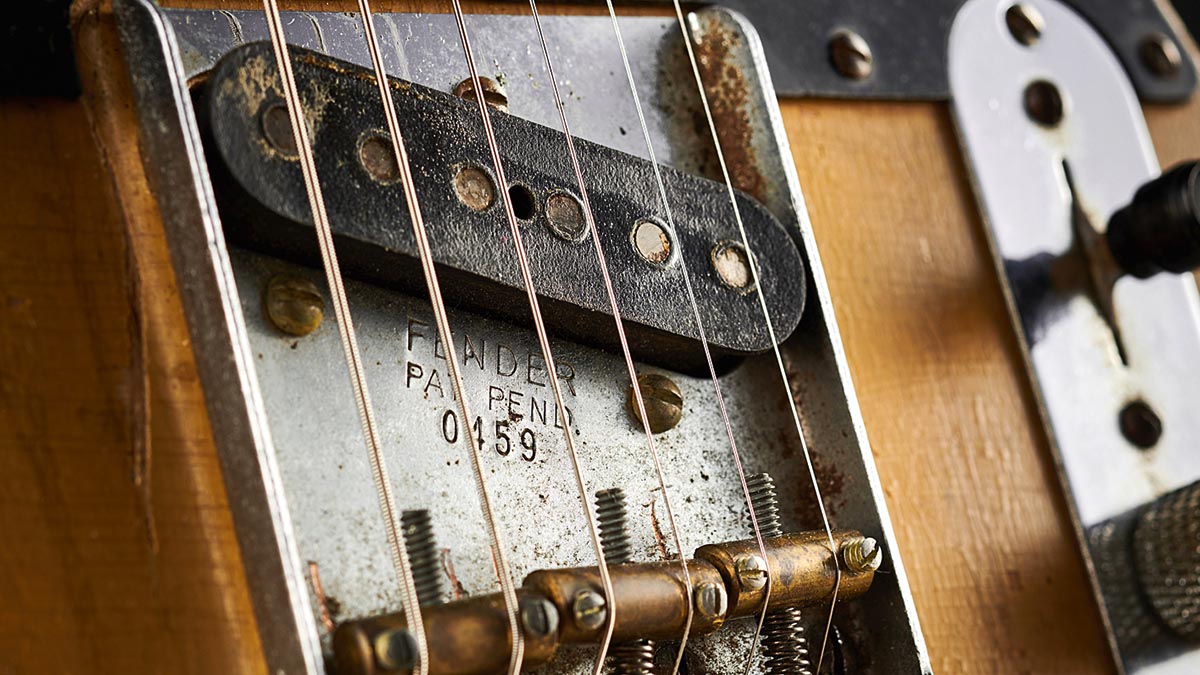
Whether you call it the Esquire, Broadcaster or Telecaster, Fender’s T-type was not the company’s first electric musical instrument. Leo Fender started making lap steels in 1946, with many of the design concepts carrying over to Fender’s first ‘electric Spanish’ guitar.
On Fender’s famous red two-pickup prototype of 1949, it’s clear to see that the neck pickup was taken straight out of a Champion lap steel – the giveaways being its shape and two mounting screws on the one side that tap straight into the body.
Fender would soon devise a completely different neck pickup, and the three mounting screws confirm that the company had already adapted the Champion unit to create a new bridge pickup. With only minor alterations, both these electric guitar pickups have remained in production ever since.
Take it to the bridge
Fender retained the coil dimensions of the Champion lap steel pickup, but added a larger bottom flat to accommodate three fixing screws. With two at the back and one at the front, the pickup height could be adjusted at each end, along with the tilt angle.
Tele neck pickups divide opinions, meaning many Tele fans swap them out for other pickups
The pickup was also suspended beneath the metal bridge. Rather than tap into the lower vulcanised fibreboard flat, Fender attached a steel baseplate to the underside of the pickup. In addition to making it easy to mount the pickup, soldering the black leadout wire to the plate grounded the bridge.
The earliest T-type bridge pickups started out with Alnico III, but around 1954 Fender began using more powerful Alnico V slugs. Initially flush with the top, the slugs became staggered in 1955, just like the recently introduced Stratocaster pickups.
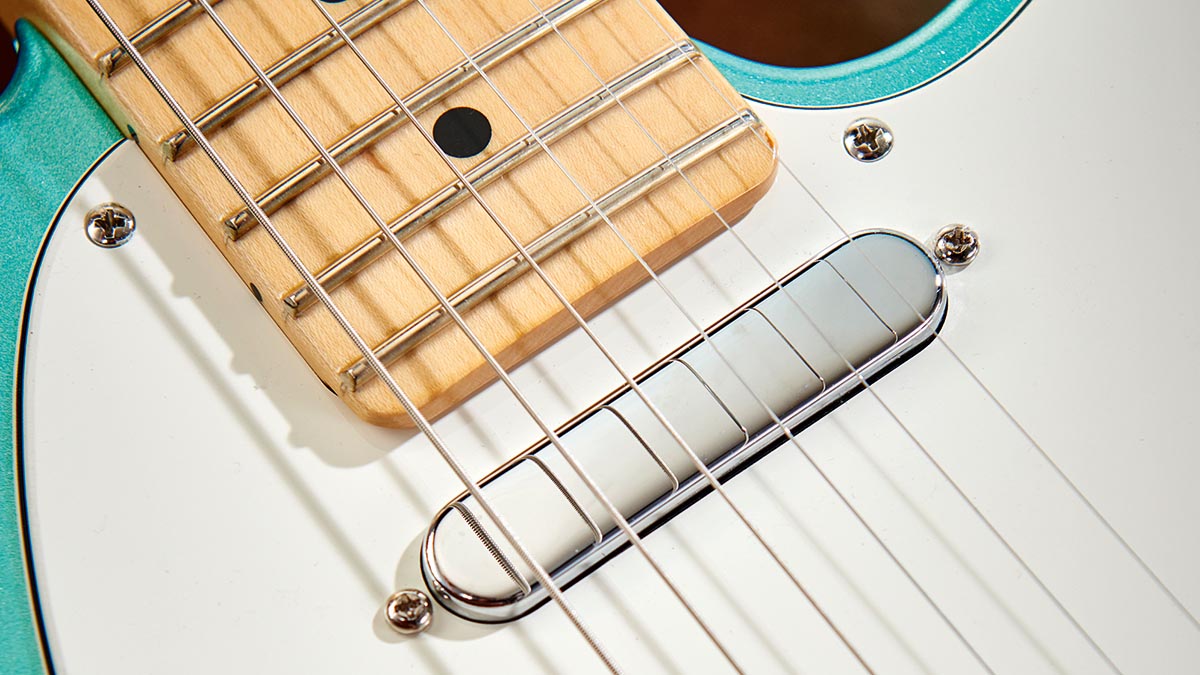
On a plate
The steel baseplates were originally plated with zinc or copper to resist corrosion and make them easier to solder. Also known as induction plates, they have a ferromagnetic effect that stabilises and strengthens the magnetic field for higher output.
Get The Pick Newsletter
All the latest guitar news, interviews, lessons, reviews, deals and more, direct to your inbox!
Only steel baseplates produce this electroferric effect. Copper, brass and steel baseplates all induce eddy current interference to boost the bass and low mids, and this electrodynamic effect can tame an otherwise shrill and trebly tone.
Copper and brass plates will warm up a Tele bridge pickup without increasing overall output, and while steel does the same, it also raises the output, which is why adding an inductance plate to the bridge pickup has become a popular Stratocaster modification.
Wired for sound
Esquire, Broadcaster and Telecaster pickups have traditionally been wound with plain enamel-coated magnet wire. There have been reports of vintage bridge pickups wound with heavy formvar wire, but these are extremely rare.
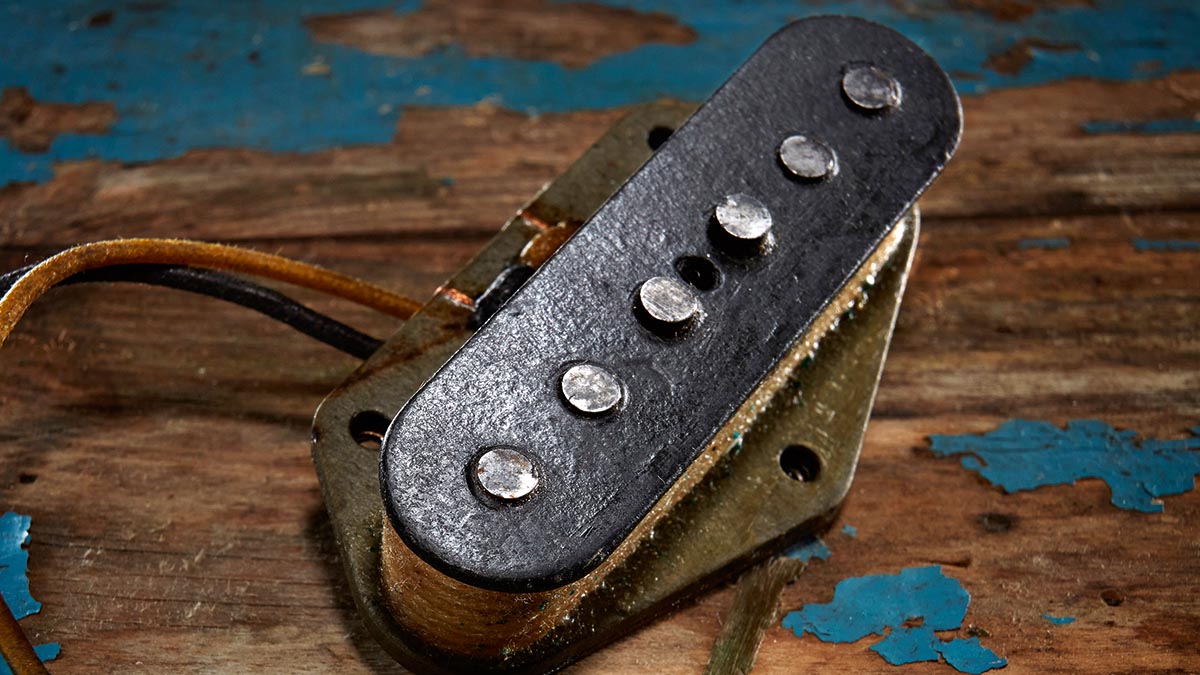
For the first year or so, Fender used 43 AWG magnet wire, but this was changed to thicker 42 AWG wire. The change roughly coincides with Fender adopting the ‘Telecaster’ model name. Thinner wire has a higher resistance, and it allows for more turns before the coil becomes full.
Early pickups can read around 10kohms with a lowish inductance, and the tone can have a fullness and compression that is closer to a P-90. In contrast, later pickups with thicker wire ohm out around 7.5k and produce a more familiar Tele twang.
The coils themselves were wrapped for protection using parcel string, a cheap and easy material to source. This string was pale in colour, but it appeared black after the wax potting process.
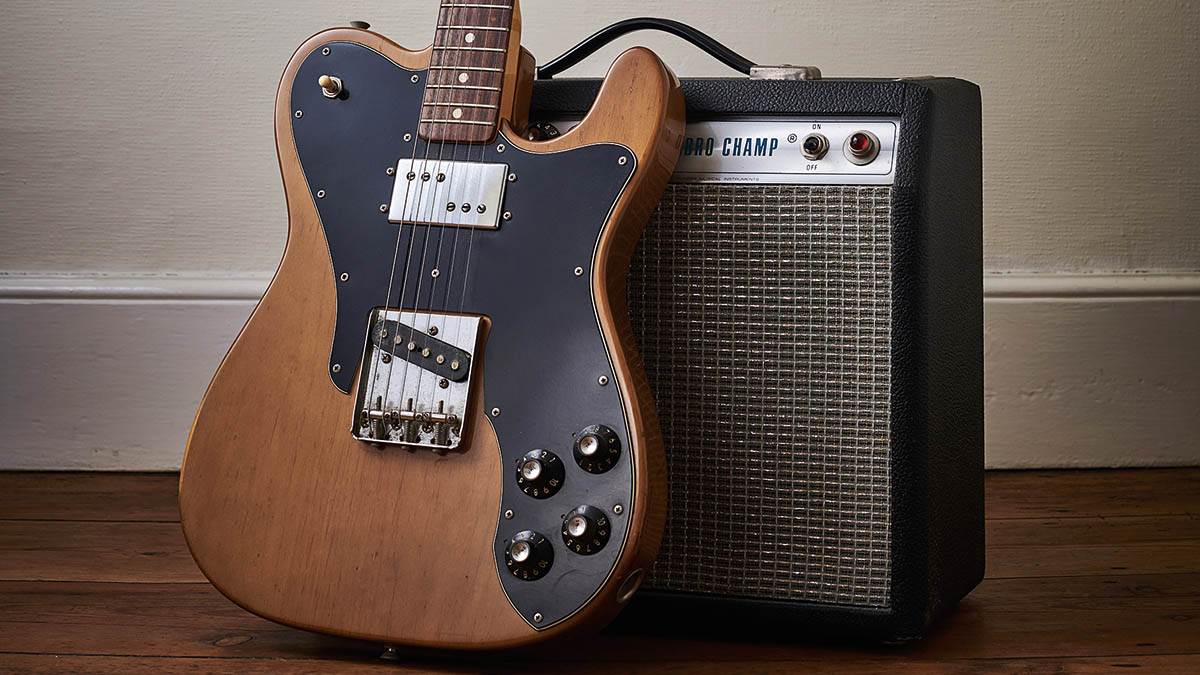
In your lap
As we mentioned earlier, the bridge pickup was adapted from a design that Fender used on Champion lap steel instruments. Fender continued making them well into the 1950s and these units measure between 5.8kohm and 8k, depending on the magnet wire.
Guitar tech Pierre de Beauport famously retrofits them to Keith Richards’ Teles, and many Champions have had their pickups, potentiometers and control knobs pilfered as a result.
The flush fitted slugs are a fraction wider than those used for the guitars, but the specs are otherwise identical to the bridge pickups on many of the earliest Esquires, Broadcasters and Telecasters.
Champion lap steels retain value even after they have had their vintage parts replaced, so buying, pilfering and reselling is a relatively affordable way into authentic 50s Tele tone. Retrofitting these pickups to a T-type requires the rectangular bottom flat to be trimmed and a metal baseplate must be attached.
Up to your neck
Of all the major electric guitar models of the vintage era, the Telecaster is the only one equipped with entirely different bridge and neck pickups. Rather than persevere with the lap steel pickup used in the red prototype, Fender designed a much smaller pickup with a narrower coil, a metal cover and screws at each end that went directly into the body.
In contrast to the bridge pickup, Tele neck pickup specs went largely unchanged. Fender retained the thinner 43 AWG copper wire with plain enamel coating, although 42 AWG was used for a brief period around 1952. The magnets began changing from Alnico III to Alnico V around 1954, but they have always been flush rather than staggered.
Dark arts
Telecaster neck pickups divide opinions, meaning many Tele fans swap them out for a wide variety of other pickups. Dissatisfaction with the neck setting may be partly attributable to the way they’re made, but Fender’s early wiring schemes didn’t do them any favours, either.
If you’re lucky enough to get your hands on an early Broadcaster, switch positions 1 and 2 selected the bridge and neck pickups respectively, with a ‘bass preset’ in position 3. There was a volume control, and the second knob acted as a blender control for the bridge and neck pickups in position 1.
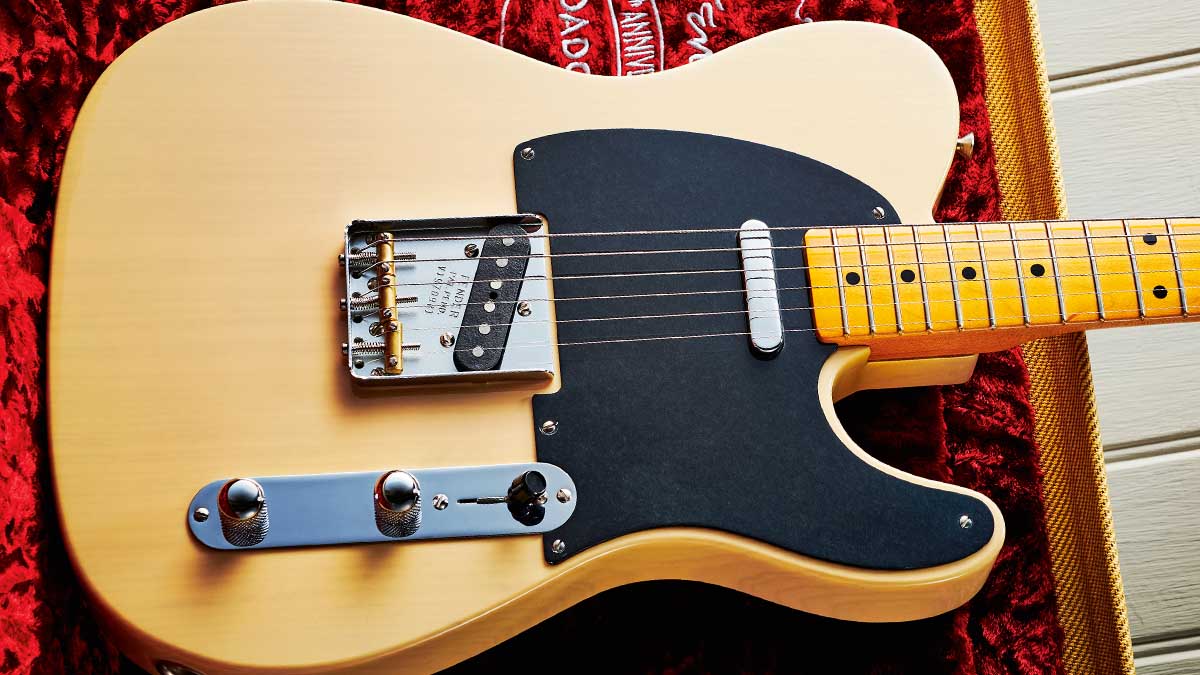
A tone control soon replaced the blender control, but the bass/neck/bridge switching was retained and that classic Telecaster tone with both pickups engaged wouldn’t become a stock feature until 1967. Fender also swapped to a 0.1µF treble roll-off capacitor in 1952, making the ‘bass setting’ even darker.
Running pickups without tone controls eliminates the treble roll-off inherent with conventional control circuits. Since that was Fender’s initial configuration, the darkening effect of the neck pickup’s metal cover would have been somewhat alleviated.
But as soon as the tone control was introduced, the cover’s sonic influence became clearly audible. This compounds the sonic characteristics of the small and squat coil shape, which can result in pickups that sound muffled, weak and indistinct – especially when compared with Tele bridge pickups.
That said, maybe detractors are more preoccupied with what Tele pickups are not, than what they are. And if you think all Tele neck pickups sound bad, we’d suggest you haven’t heard a good one yet. Set close to the strings – but far enough away to avoid string pull and string contact – the best examples produce a surprisingly clear, warm and woody tone with a rounded transient attack.
It’s worth remembering that most electric players were using hollow-bodied guitars when the Broadcaster was introduced, and that big jazzy tone is something Tele neck pickups can do extremely well. Check out Tim Lerch or Julian Lage’s Blackguard Tele tones if you need convincing, because that’s probably close to what Leo Fender was shooting for.
If you appreciate Strat neck pickup tones but think Teles are way cooler, you may feel inclined to modify your Telecaster by fitting a Strat pickup, rather than change guitars
If you appreciate Strat neck pickup tones but think Teles are way cooler, you may feel inclined to modify your Telecaster by fitting a Strat pickup, rather than change guitars. Players have also been fitting humbuckers in the neck position since the late 50s, and it’s an undeniably effective and practical move.
For those who do try this, we suggest fitting a 500k volume potentiometer and wiring a 470k or 500k resistor between the bridge pickup’s hot connection and ground. You can do this on the switch itself and it will prevent the humbucker from sounding muddy with the stock 250k pot. The resistor ensures the bridge pickup ‘sees’ a nominal 250k so it doesn’t sound too bright, and the middle position still sounds great.

Cover versions
Before dropping a Strat pickup, humbucker, P-90, Goldfoil or Charlie Christian into your Telecaster, there are a couple of simple and affordable modifications you can try in order to improve a dull Tele neck pickup.
Start by desoldering or snipping the little wire that connects the cover to negative leadout wire. The difference won’t be dramatic, but it is audible. The downside here is a slight buzzing sound if you inadvertently touch the cover with your picking hand.
Fender’s thick brass covers can sound quite dull, so if your pickup has one, try fitting a nickel silver replacement instead
The metal that the cover is made from also makes a difference. To minimise treble roll-off, a thin nickel silver cover is preferable. Fender’s thick brass covers can sound quite dull, so if your pickup has one, try fitting a nickel silver replacement instead. The cover can also be removed to open up the tone as much as possible.
If that leaves exposed coils, get some pickup wrapping tape and cover the wire. While that should protect the windings, if the pickup is set too close to the strings, the top and bottom E strings may get stuck under the top flat and damage your pickup so bear this in mind.
If you prefer the sound without the cover, try sourcing a plastic cover to replace the metal one. Fitting an open top cover will also eliminate the cover effect while protecting the coil, or you could even consider a replacement pickup wound with Formvar wire, such as the House Of Tone TS-42.
CBS changes
Around 1964, Fender started using grey fibreboard for the bridge’s bottom flats, and from around 1967, Telecaster pickup coils were potted in lacquer rather than wax, which can result in coils that are very solid outside and loose inside.
If you play a Tele from this era with original pickups then you’ll find that these units can sound very trebly and are prone to microphonic squeal.
When used in combination with the 1 meg-ohm control pots that Fender adopted around the same time, the result can be challenging to the ear – a reminder that not all vintage Telecaster pickups were created equal.
Huw started out in recording studios, working as a sound engineer and producer for David Bowie, Primal Scream, Ian Dury, Fad Gadget, My Bloody Valentine, Cardinal Black and many others. His book, Recording Guitar & Bass, was published in 2002 and a freelance career in journalism soon followed. He has written reviews, interviews, workshop and technical articles for Guitarist, Guitar Magazine, Guitar Player, Acoustic Magazine, Guitar Buyer and Music Tech. He has also contributed to several books, including The Tube Amp Book by Aspen Pittman. Huw builds and maintains guitars and amplifiers for clients, and specializes in vintage restoration. He provides consultancy services for equipment manufacturers and can, occasionally, be lured back into the studio.
“Classic aesthetics with cutting-edge technology”: Are Seymour Duncan's new Jazzmaster Silencers the ultimate Jazzmaster pickups?
“We’re all looking for new inspiration. Some of us have been playing humbuckers for a long, long time”: Are we witnessing a P-90 renaissance? Warren Haynes has his say
